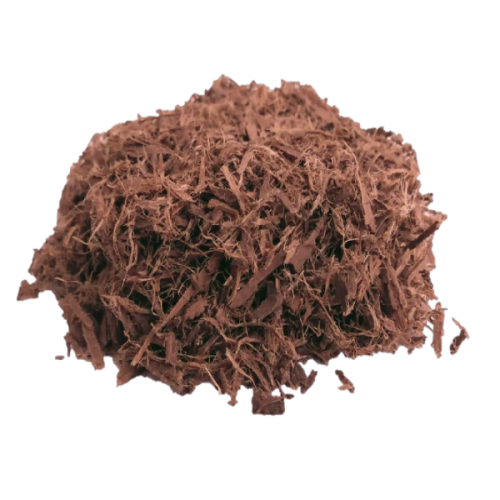Mimosa Hostilis Root Bark holds a significant position in classic practices and modern-day botanical programs. This short article explores the attributes, origins, and customary questions bordering this remarkable plant product, with a particular center on the prized Brazillian Mimosa Hostilis Root Barks.
What on earth is Mimosa Hostilis Root Bark?
Mimosa Hostilis, scientifically often called Mimosa tenuiflora, is actually a perennial tree native to the northeastern region of Brazil and portions of Mexico. The basis bark of the tree has become used for hundreds of years by indigenous communities for numerous functional and traditional functions. The interior root bark includes notable concentrations of tannins, alkaloids, along with other phytochemicals that lead to its distinct Houses and applications.
The tree by itself is remarkably resilient, able to surviving in poor soils and drought disorders. This hardiness contributes towards the sturdy mother nature of your bark and its chemical profile. When harvested sustainably, the outer root bark is thoroughly divided to obtain the valuable internal bark, which can be then dried and geared up to be used.
Brazilian Mimosa Hostilis Root Bark: The Gold Regular
When discussing top quality in Mimosa Hostilis solutions, the Brazillian Mimosa Hostilis Root Barks are normally regarded as excellent in the botanical market. Quite a few elements lead to this track record:
Optimal Rising Disorders
The precise soil composition, climate, and ecosystem of Brazil's northeastern area develop suitable circumstances for Mimosa tenuiflora to acquire its whole chemical potential. The mineral-abundant soils and specific sample of rainfall and daylight During this location show up to reinforce the focus of active compounds in the root bark.Regular Harvesting Expertise
In regions exactly where Mimosa Hostilis has long been utilized traditionally, harvesters have produced complex approaches for sustainable harvesting that preserves each the tree plus the potency in the bark. This understanding, passed down through generations, makes sure that the bark is collected at the proper time of calendar year and processed utilizing strategies that sustain its integrity.Exclusive Actual physical Attributes
Brazilian Mimosa Hostilis Root Bark commonly displays a abundant reddish-brown to purple internal bark which has a fibrous, dense texture. The Visible features normally serve as an Original indicator of quality, with knowledgeable users recognizing the distinctive visual appeal of bark from this location.
Common Apps and Works by using
The applications of Mimosa Hostilis Root Bark span both traditional and present day contexts, while it's vital to understand the legal status of such takes advantage of varies by state and jurisdiction.
Classic Craft and Observe
Indigenous communities have Traditionally utilized Mimosa Hostilis Root Bark for creating organic dyes for textiles, With all the bark creating gorgeous shades of purple, burgundy, and deep brown. The tannin-rich Homes also manufactured it useful for leather-based tanning and also other simple apps.Modern day Botanical Analysis
Modern curiosity in Mimosa Hostilis Root Bark extends to varied fields of botanical investigate, specially researching its chemical composition and likely applications. Researchers have identified many exciting compounds inside the bark that warrant more scientific investigation.Horticultural and Agricultural Utilizes
In permaculture and sustainable agriculture, Mimosa tenuiflora is valued as a nitrogen-repairing species which can increase soil quality. The bark by itself, when processed, can be employed as being a all-natural mulch or soil Modification in sure agricultural contexts.Quality Evaluation and Identification

For anyone working with Mimosa Hostilis Root Bark, knowledge tips on how to assess good quality is vital. Significant-high quality material, specially genuine Brazillian Mimosa Hostilis Root Barks, ordinarily reveals selected features:
The visual look ought to display a transparent difference amongst the outer and internal bark, Together with the interior bark exhibiting deep, vibrant colours. The material should have a attribute earthy, marginally sweet aroma, cost-free from musty or moldy notes. When processed, the bark ought to produce a great powder while maintaining its fibrous composition until grinding. Properly dried bark should be brittle although not dusty, indicating appropriate moisture material.
Commonly Questioned Thoughts (FAQs)
1. What is the difference between Mimosa Hostilis Root Bark from Brazil as well as other areas?
Brazilian Mimosa Hostilis Root Bark is normally viewed as remarkable as a result of optimal developing ailments in northeastern Brazil, which end in higher concentrations of active compounds. The traditional harvesting approaches made use of On this location also lead to the general quality and potency of the ultimate merchandise.2. How should I retail outlet Mimosa Hostilis Root Bark to take care of its top quality?
Retail store the bark inside of a great, dark, and dry put in an airtight container. Security from light, moisture, and extreme temperature fluctuations should help maintain the bark's chemical integrity and forestall degradation of its Lively elements.three. Is Mimosa Hostilis an endangered species?
No, Mimosa tenuiflora just isn't presently mentioned being an endangered species. In fact, It is noted for its resilient progress and skill to thrive in tough disorders. Nevertheless, dependable harvesting procedures are still necessary to make sure the sustainability of wild populations.4. Can I grow Mimosa Hostilis outside of its native habitat?
When Mimosa tenuiflora thrives very best in its indigenous tropical weather, it might be cultivated in equivalent environments. The tree calls for nicely-drained soil, a good amount of daylight, and protection from frost. On the other hand, the chemical profile of Mimosa Hostilis Root Bark cultivated specimens could differ from wild-harvested Brazilian content.five. What is the legal status of Mimosa Hostilis Root Bark?
The legal standing differs significantly by country and jurisdiction. In a few destinations, the Uncooked bark is authorized to possess, even though in Other people, particular extracts or preparations might be regulated. Often investigation and adjust to regional legislation and rules ahead of attaining or using any botanical compound.Comprehending Mimosa Hostilis Root Bark, particularly the premium Brazillian Mimosa Hostilis Root Barks, involves appreciation of its botanical characteristics, common context, and ideal applications. No matter whether for exploration, craftsmanship, or botanical analyze, this remarkable plant substance proceeds to be a matter of fascination throughout various fields, nevertheless generally inside of suitable legal and ethical boundaries.